Picking up the Pieces: Rainbow Support Group Helps People Find Meaning After Loss
Picking up the Pieces
by Kenyon Kemnitz
When we lose a loved one, we often feel broken and empty, and our grief can be overwhelming. We don’t know how to pick up the pieces and put our lives back together.
Grief is different for everyone but finding comfort in others and sharing special memories can help ease the pain.
Rainbow Hospice Care Bereavement Counselor Laura Wessels thought that those attending her Monday Morning Joe grief support group could benefit from a hands-on activity designed to help them find purpose and meaning in their grief.
“I was inspired by what the bereaved shared with me,” said Wessels. “One woman told me that she felt like Humpty Dumpty. She had fallen apart and was putting herself back together with cracks and missing pieces that left gaping holes. Someone else noted that he felt broken in a way that didn’t need to be fixed, that he was beautifully broken. I thought this project would allow the group to not just talk about their grief but create a picture of it.”
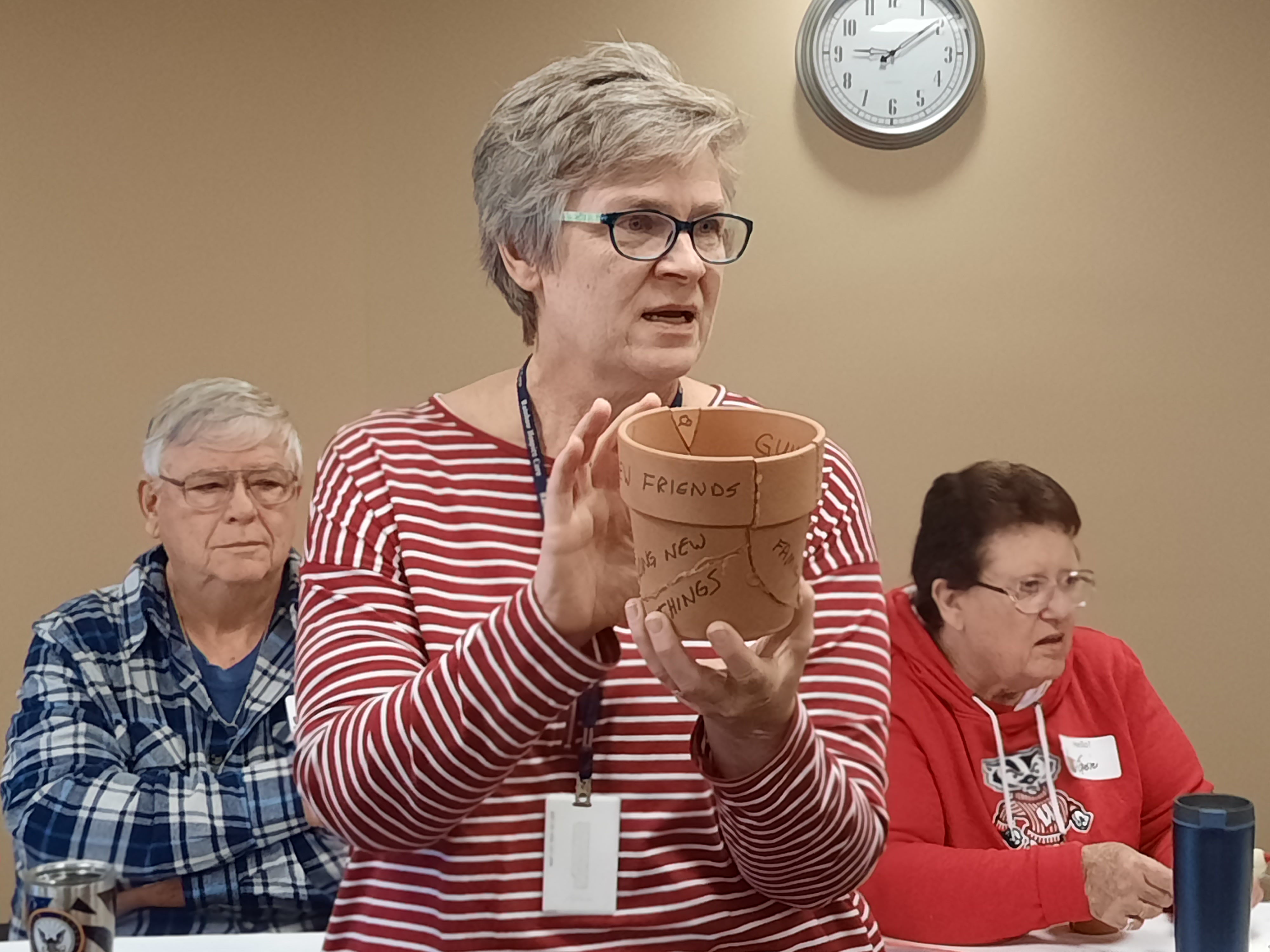
At the meeting, each attendee started by taking a pot and breaking it into pieces using a hammer. That break symbolizes the effect of a loved one’s death on a person’s life. Another participant chose salt and pepper shakers for their broken vessel, while another opted to put a broken plate back together.
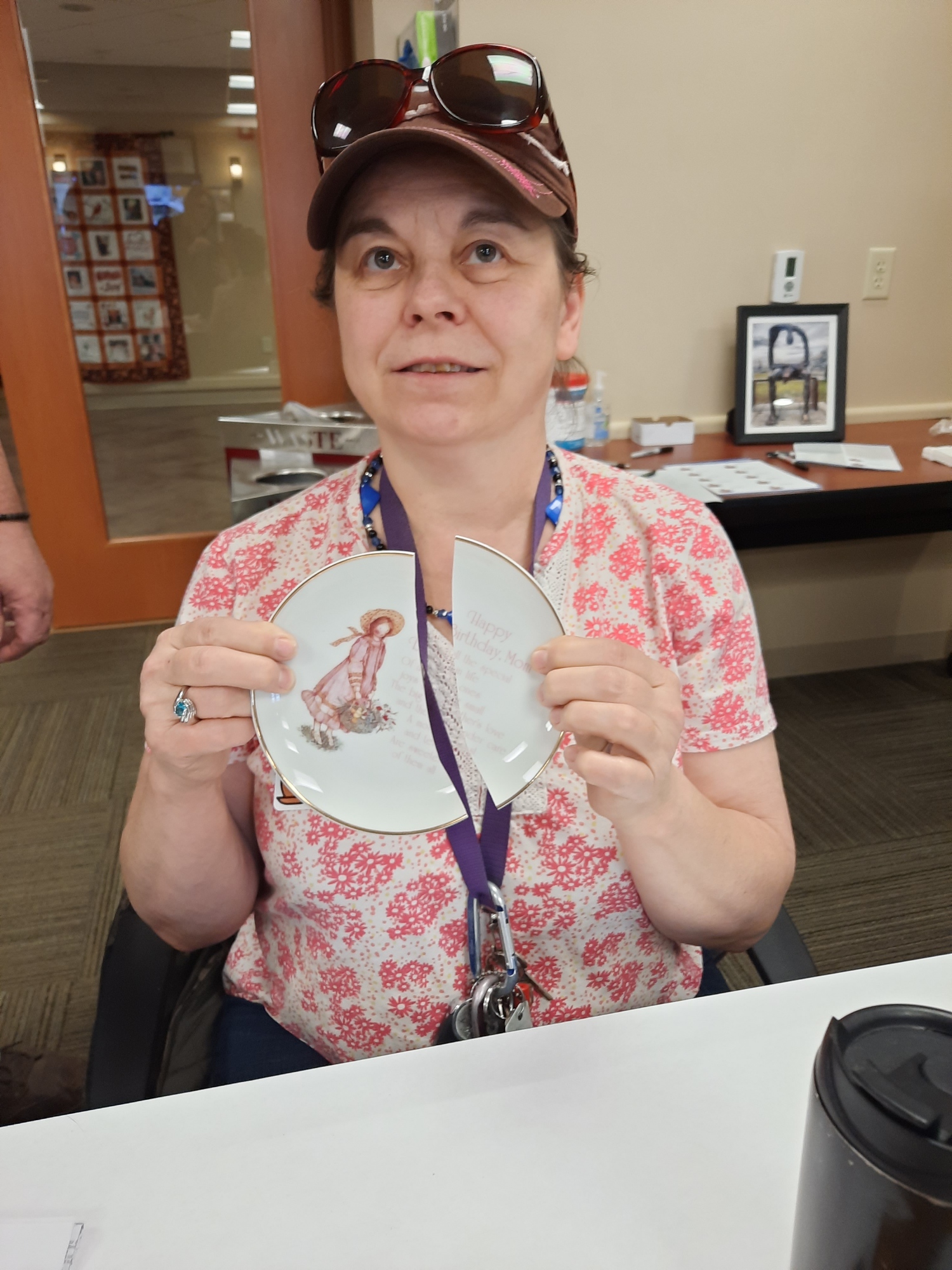
Laura’s concept for the project closely resembles the ancient Japanese art of “Kintsugi”, which involves fusing broken pottery pieces back together with glue and gold.
The 15 group participants were next instructed to write or draw the feelings they have experienced since the death of their loved one on the inside of the pot.
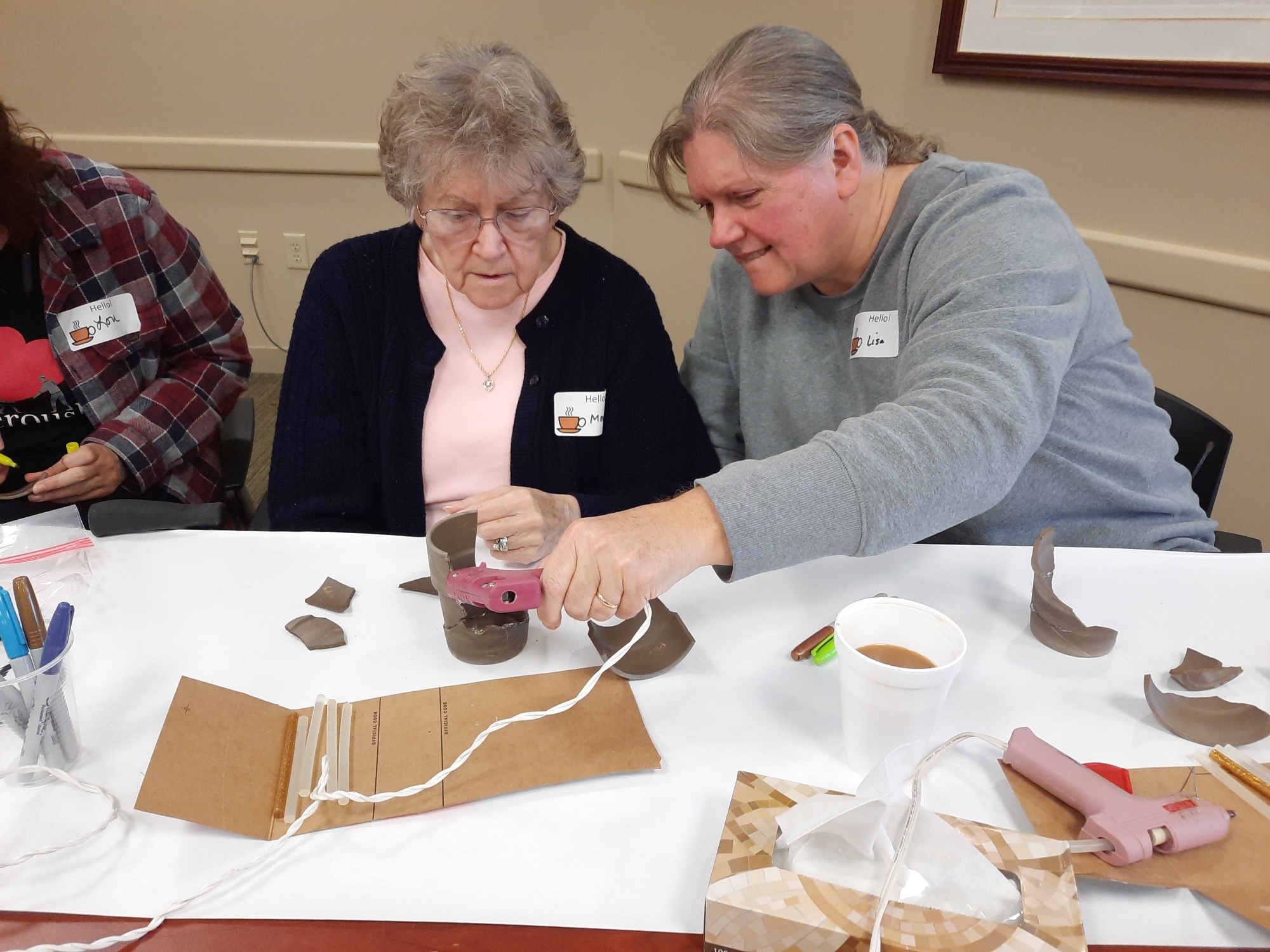
“I chose to write the things I miss most about my husband,” said Jody Weihert. “I felt the broken pot already expressed my pain, so the words inside help me to feel his love.”
“At the bottom of the inside of my pot, it says “hope for the future,” because I have that feeling every day,” said Dennis Dick.
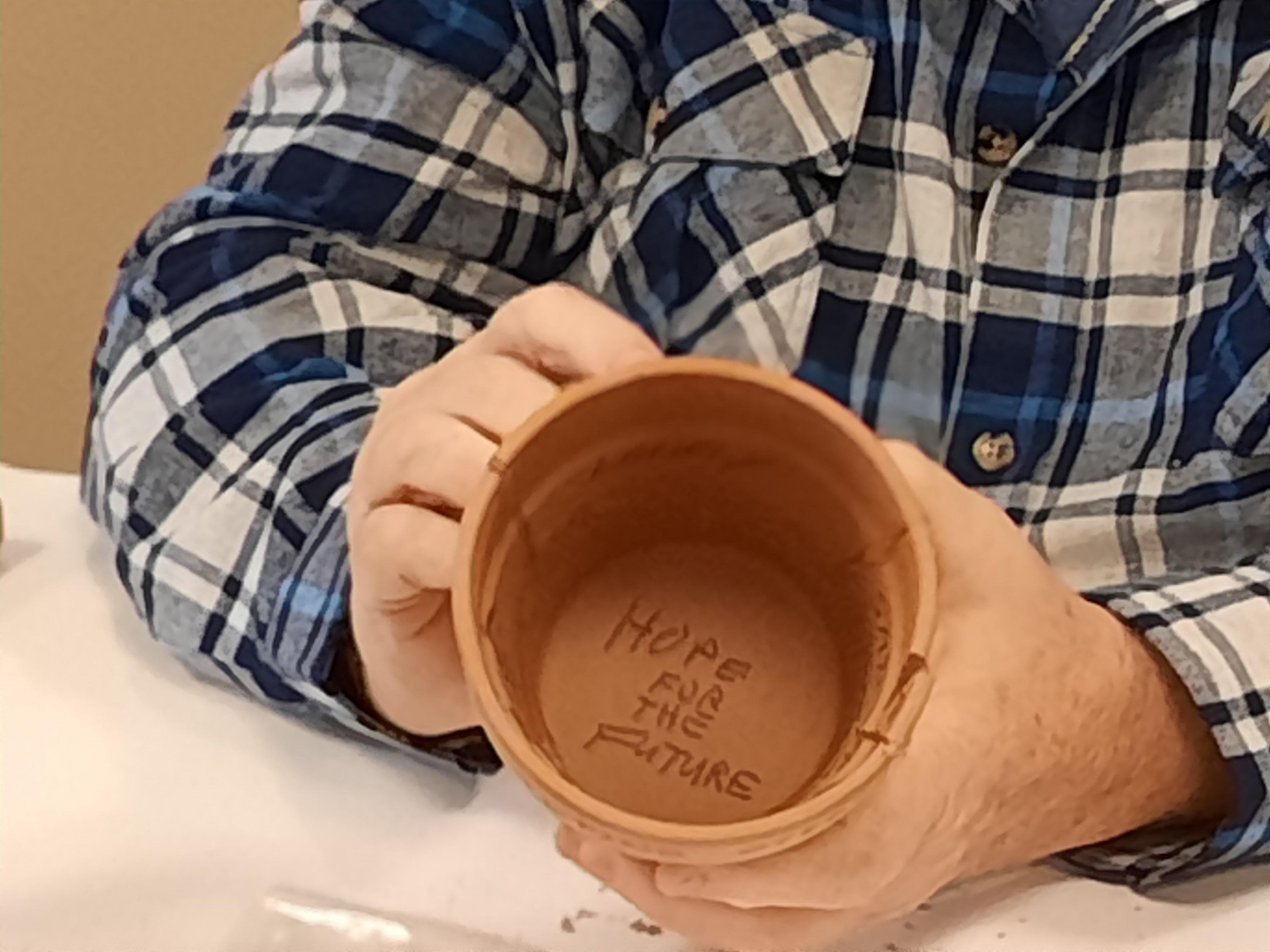
Hugh Drennan’s wife, Doreen, died in October 2021 on Rainbow Hospice Care’s services. Instead of a pot, he chose a chalice to symbolize the covenant he made with his wife in the presence of God.
“Writing on the inside of that broken chalice reflected the pain and suffering one endures in the loss of a loved one,” said Drennan. “It is cathartic to name those pains, embrace them as part of the life and death process, and deal with them.”
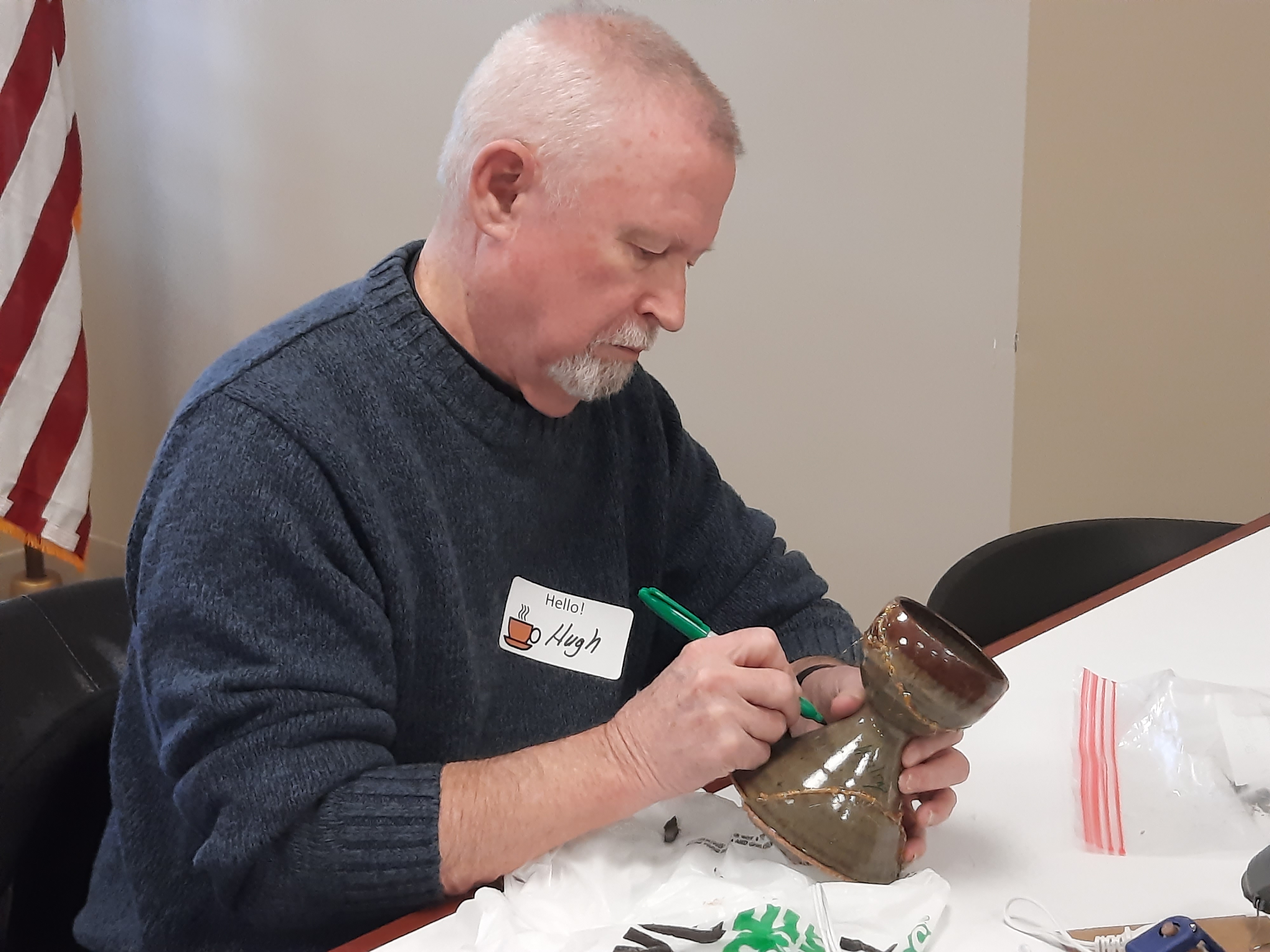
The toughest and most frustrating challenge for most of the group was trying to glue the pot back together, to make it “whole” once again. This symbolizes the reconstruction process after losing a loved one.
“I was trying so hard to get my pieces to fit together perfectly, but in reality, that is not what grief looks like,” said Lou Klein. “It's a mess. It's ugly.”
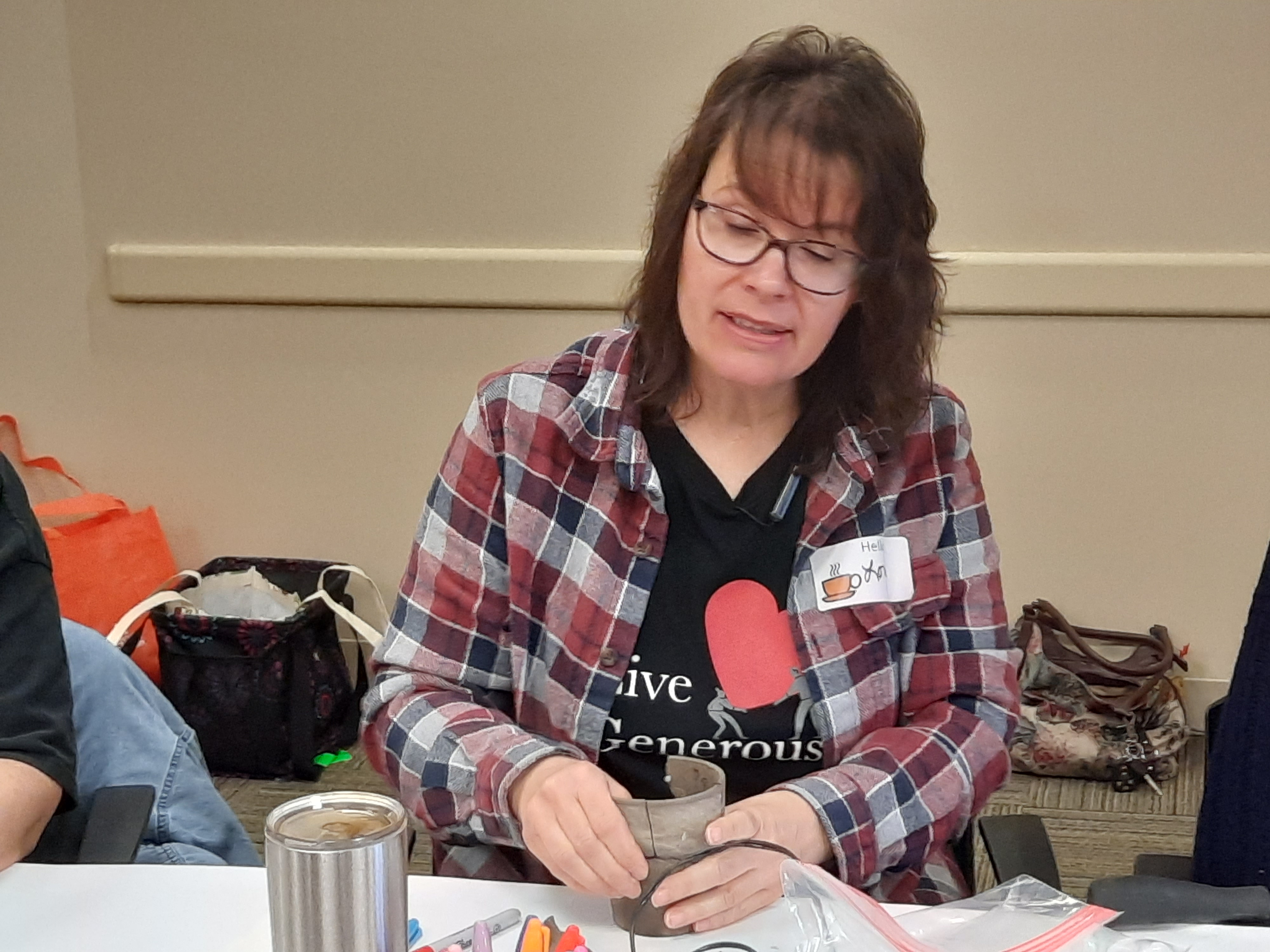
“All those cracks suddenly became golden and kind of neat,” Drennan said. “I liked all the imperfections of the broken covenant getting stuck back together again.”
After putting their pots back together as best they could, attendees decorated the outside with words, drawings, images, and other expressions that have been sources of peace, strength, and support during their grieving process. For many, that includes the grief support group, family, friends, faith/church, or music.
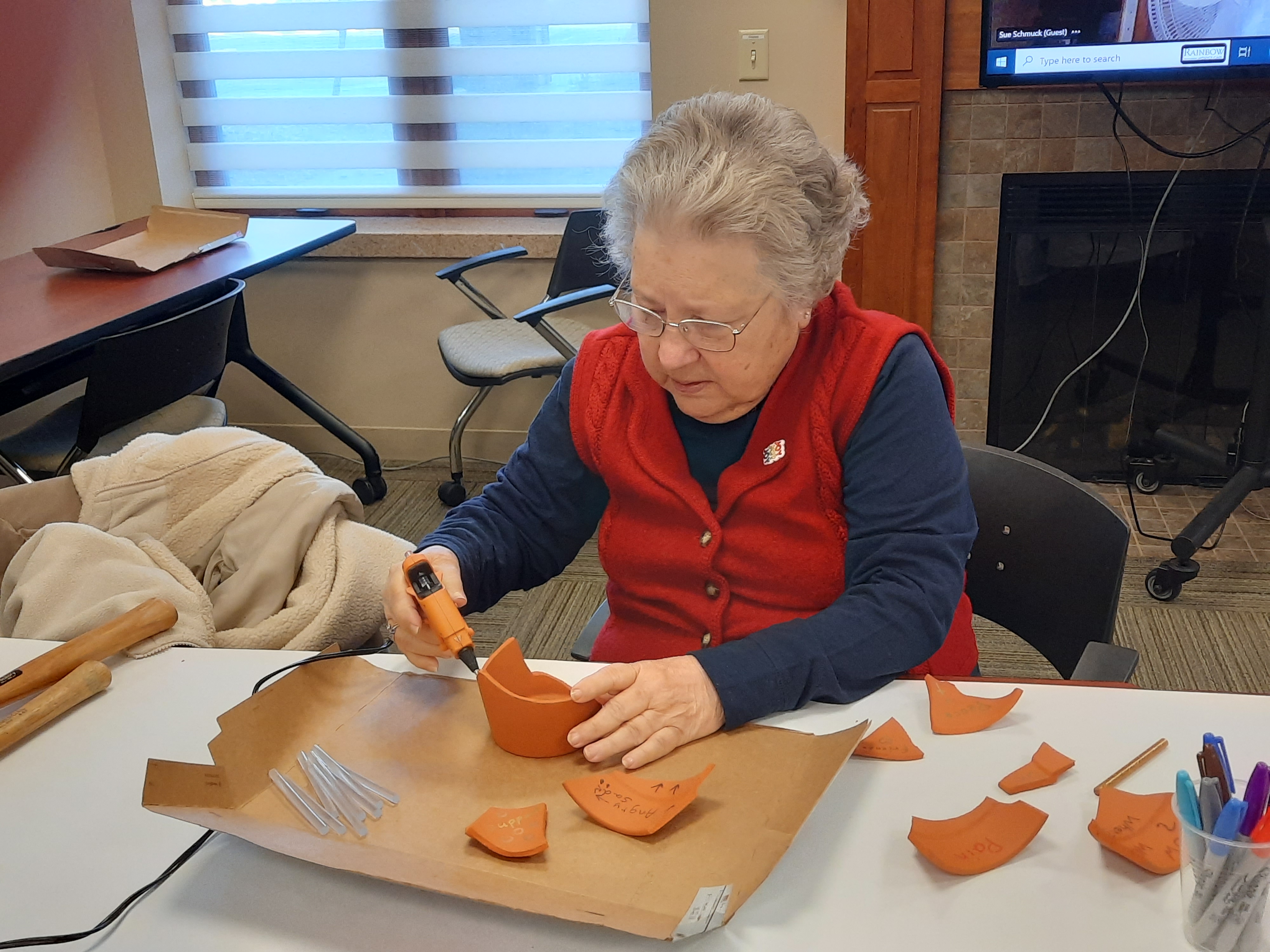
Lou Klein has been grieving the loss of her parents and found it emotional at first to display what her grief looks and feels like. She decided to look up symbols to draw on the outside of her pot instead of writing down words and ended up with several ideas.
“I put a symbol for "new life" because my life is different now,” Klein said. “My family never says goodbye, we always say ‘see you later’ because even if we leave this life, we will be reunited in heaven one day. I drew a hand waving and wrote, ‘see you later.’ I also added an endless or eternal knot because we will always be connected.”
“The words on the outside reflect hope for the future, when relationships will be restored even better than we can imagine,” Drennan said.
Lastly, the cracks in their pots were decorated with gold to symbolize healing and restoration. Dennis Dick chose purple to fill in his cracks because that was his late wife Jeannie’s favorite color. Everyone shared their process for how their pot ended up looking like it did. There were so many ways for them to make their pots personal.
Jody Weihert’s husband, Darcy, passed away in December 2021. She painted her pot green and gold to reflect the love they shared for the Green Bay Packers.
“The pot certainly isn't perfect, but neither is life after losing a loved one,” Weihert said. “The pot has already helped by sharing the process with some family members. It opened up some much-needed conversation.”
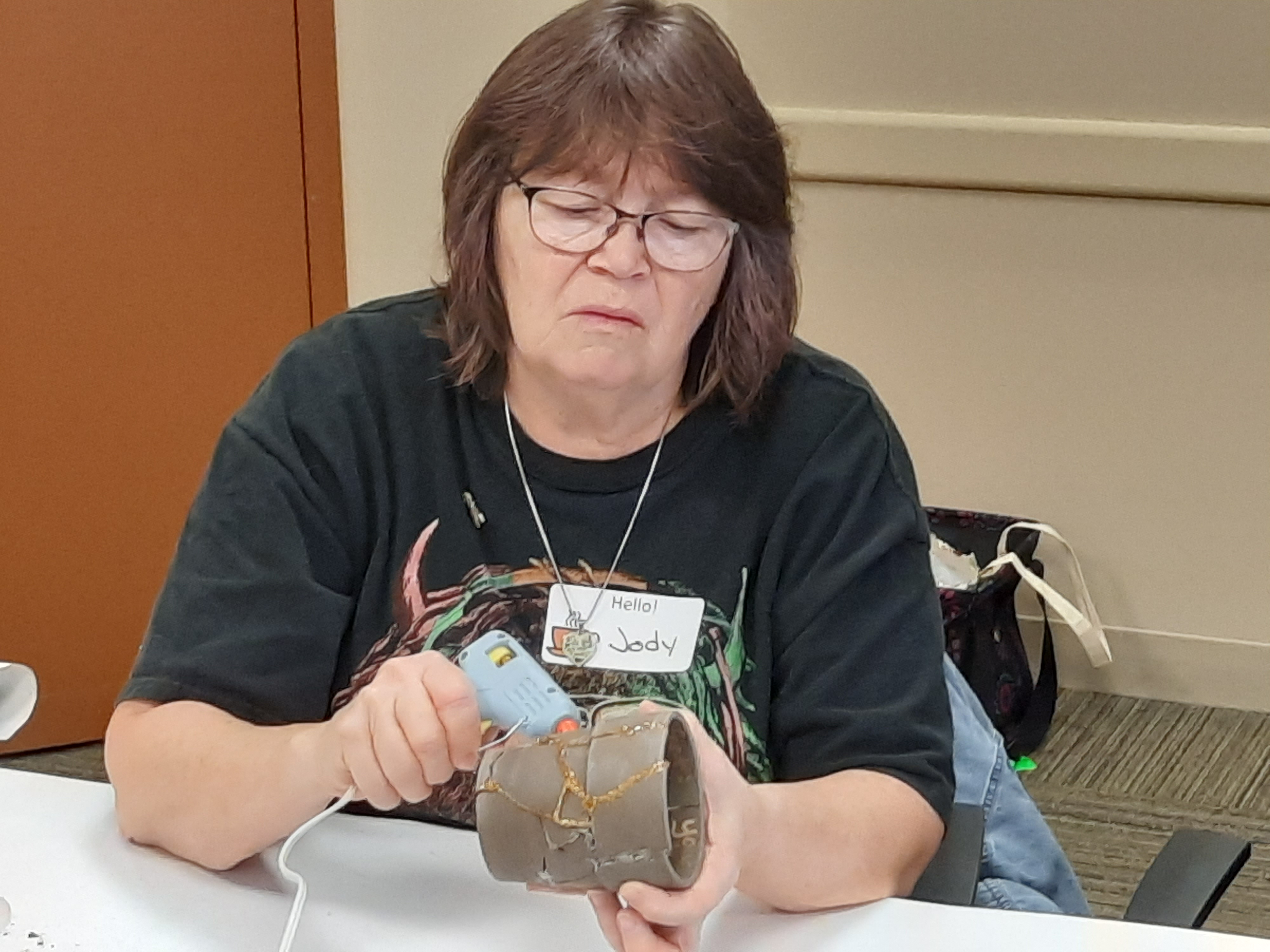
Sue Schmuck couldn’t be in-person with the group, so she joined via a Microsoft Teams call from Arizona. She lost her husband, Tim, to ALS in May 2022 and had some initial thoughts about what her pot would look like beforehand but found other ideas for inspiration.
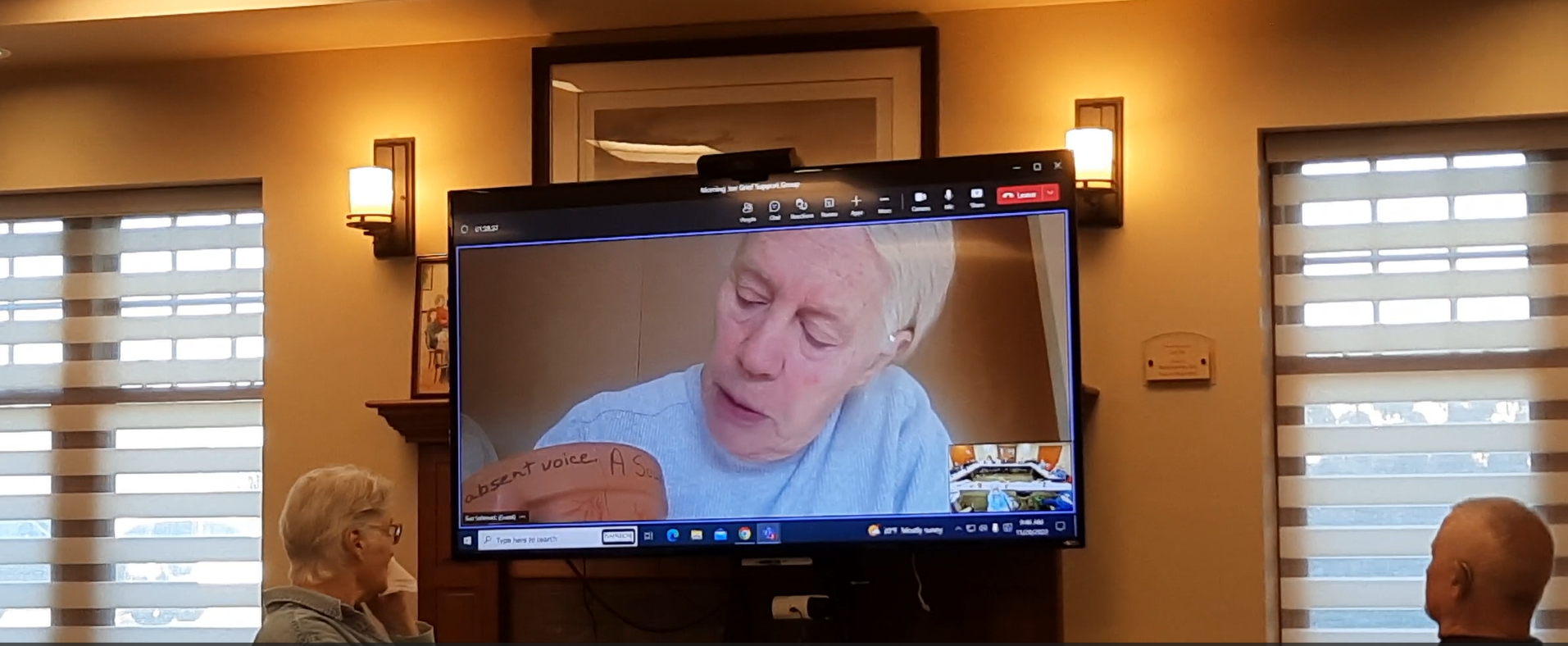
“When I had the broken pieces in front me and saw the hole in the bottom, I knew I had to draw a heart around it and mention the hole I feel in my heart,” said Schmuck. “There wasn’t much question in mind as to where I would go with my creation. I knew it would celebrate my sweet Tim, and that’s all I wanted.”
What she and others found to be the most beneficial part of the process was being able to share their thoughts, emotions, and joys with the group.
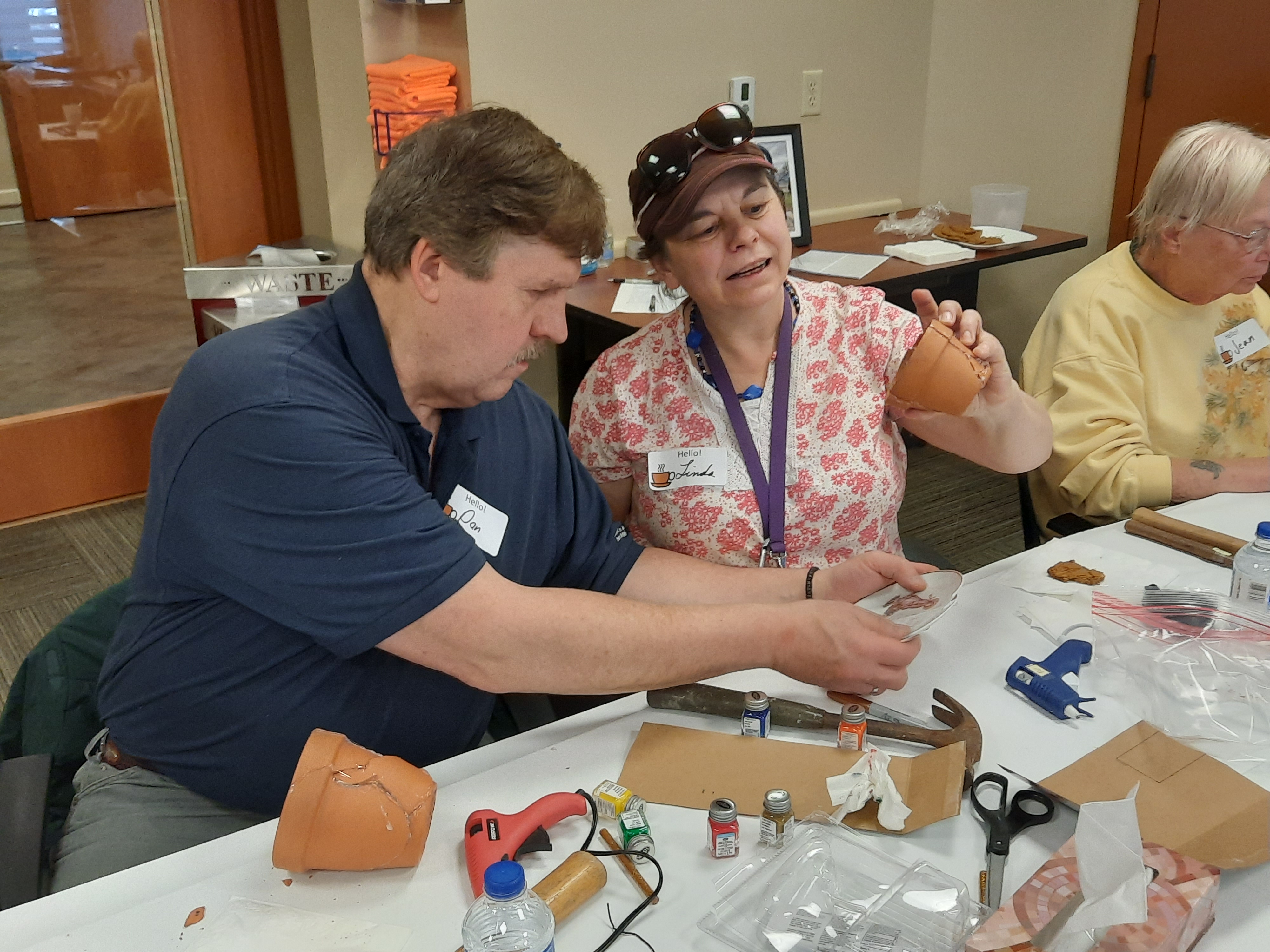
“The sharing and learning from others were a highlight of my experience,” Schmuck said. “Hearing what others put on a pot gave me ideas about what I might add to mine.”
“Our shared experiences help us not to feel so very alone as we deal with a common experience experienced in so many different ways,” Drennan said.
Many participants plan to put their finished piece on display or put a plant or flowers inside of it. It will serve as a conversation piece and reminder to talk openly about their grief and share memories of their loved ones with others.
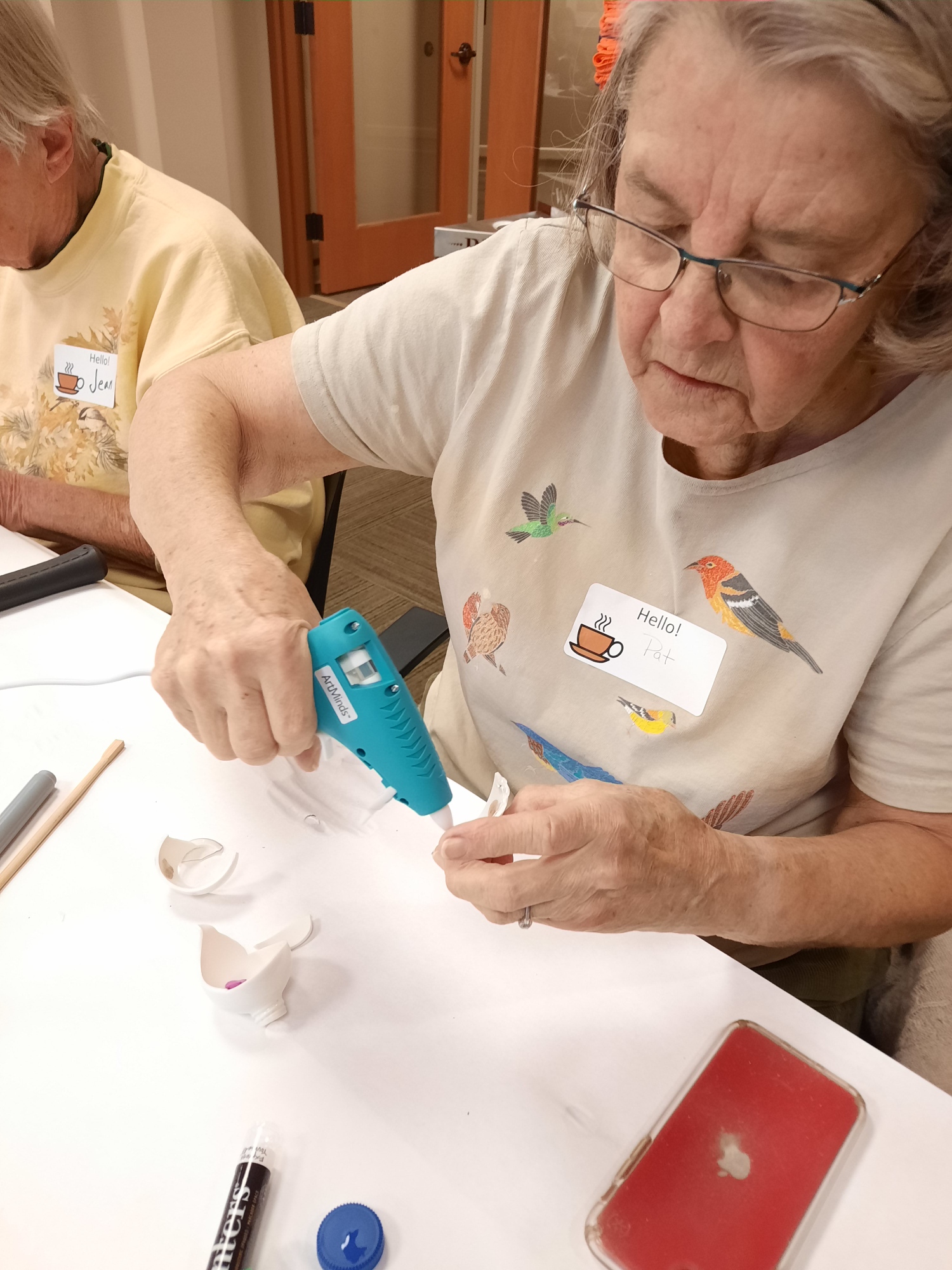
“This is going to be on my table in my dining room with a Christmas cactus in it, and anybody who asks about it, I’ll gladly tell them,” Dick said. “It will be displayed forever.”
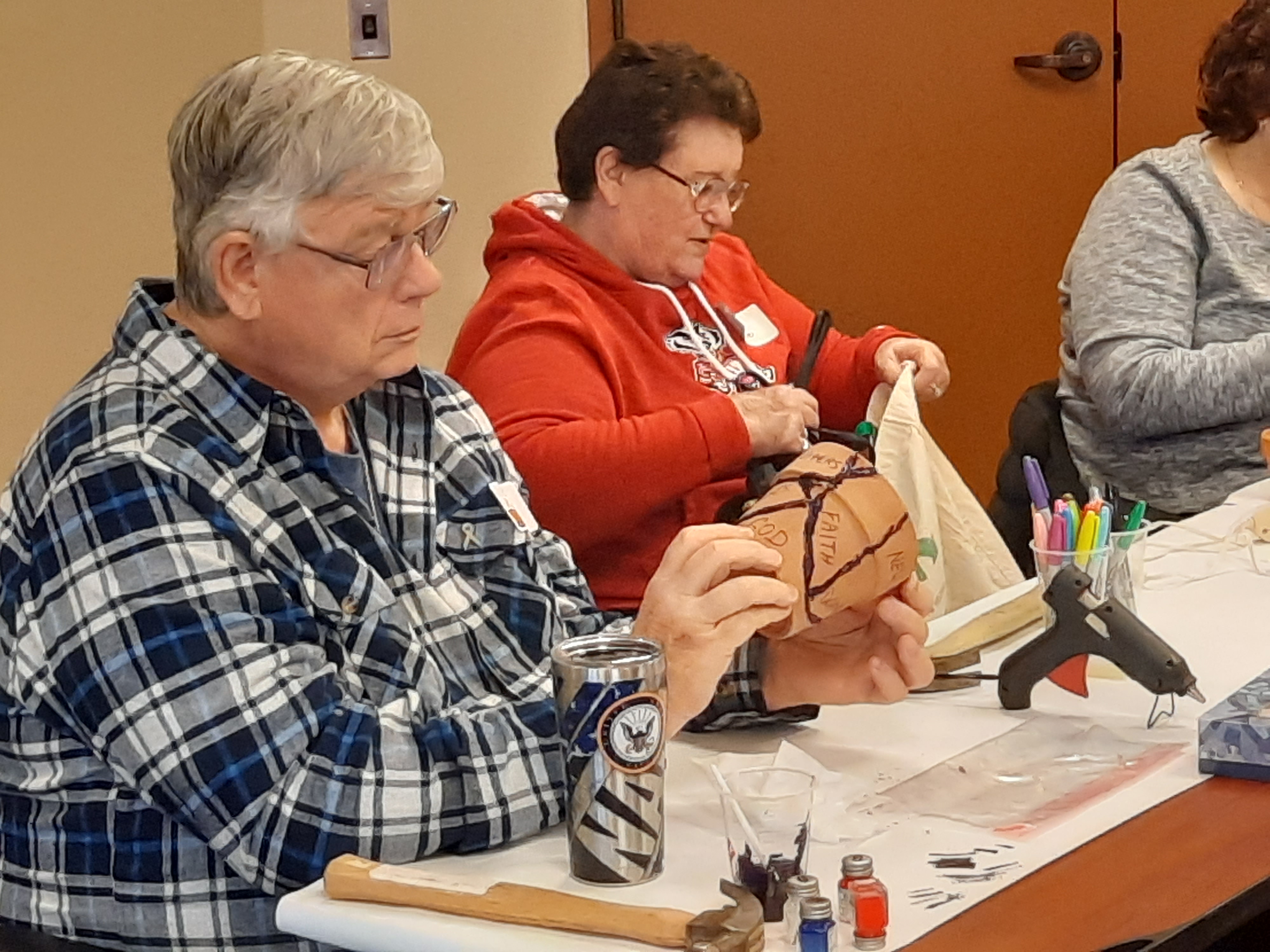
“I will put a tea light in mine to remind me to let my light shine and to embrace the cracks,” Klein said. “We are connected by one common thread. Our heartache helps us to show empathy and support to those that are hurting. As sad as it was to hear people describe their pots, it was also so beautiful. I believe it was very healing for most. It's healing to talk about your loved one.”
Group members know their hearts may never fully heal. Without their loved one, their lives aren’t the same as before, and now neither is their broken pot after they placed it back together. But it symbolizes their journey through grief.
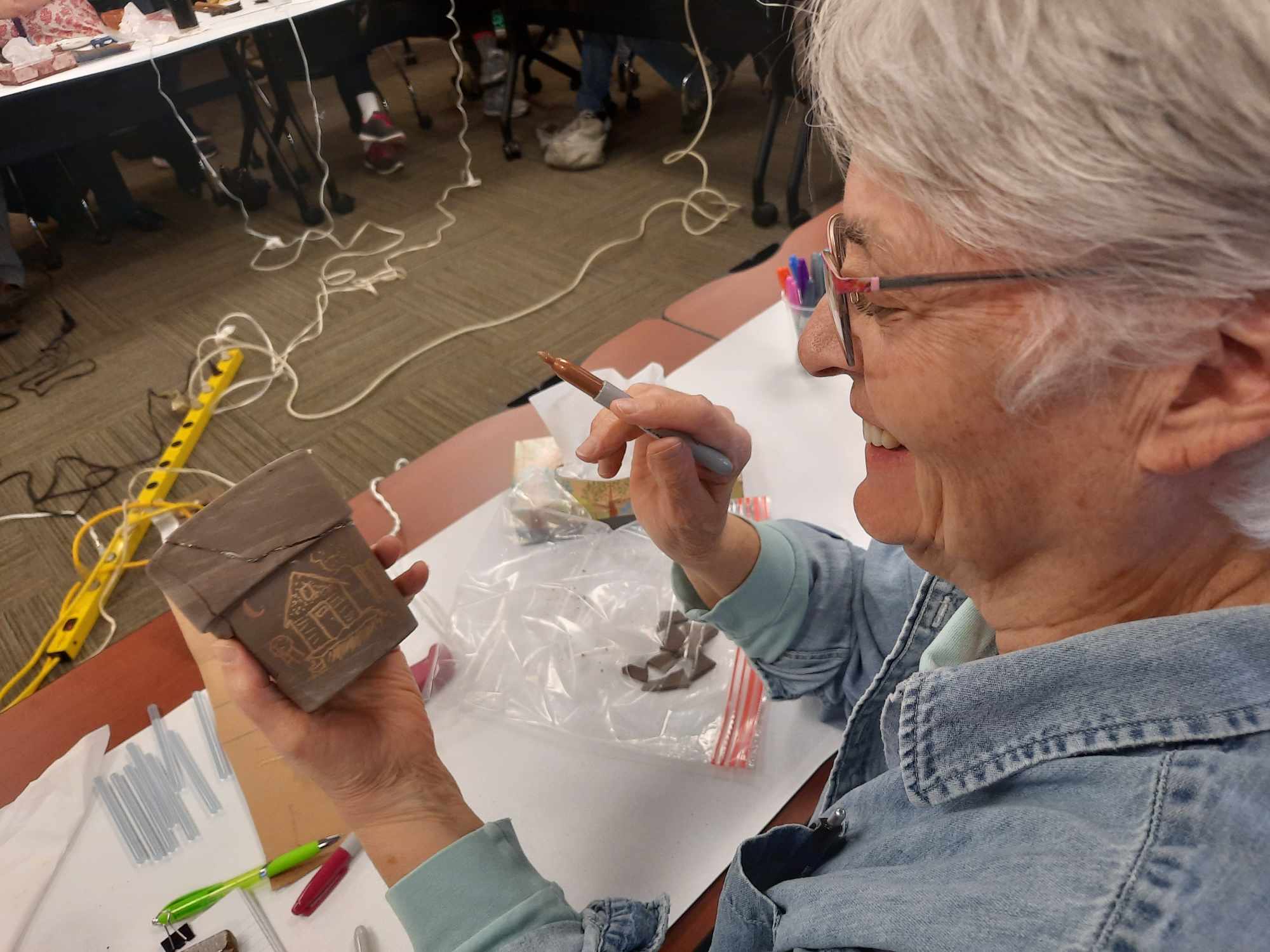
“No two pots were the same as they broke differently and reflected that individual’s loss,” said Hilary Furnish, Rainbow Bereavement Counselor. “We heard the participants expressing frustration with the difficult process of putting the pots back together and would say ‘but that’s how grief is, isn’t it?’ “This exercise put their grief into their hands and allowed them to tell their story.”